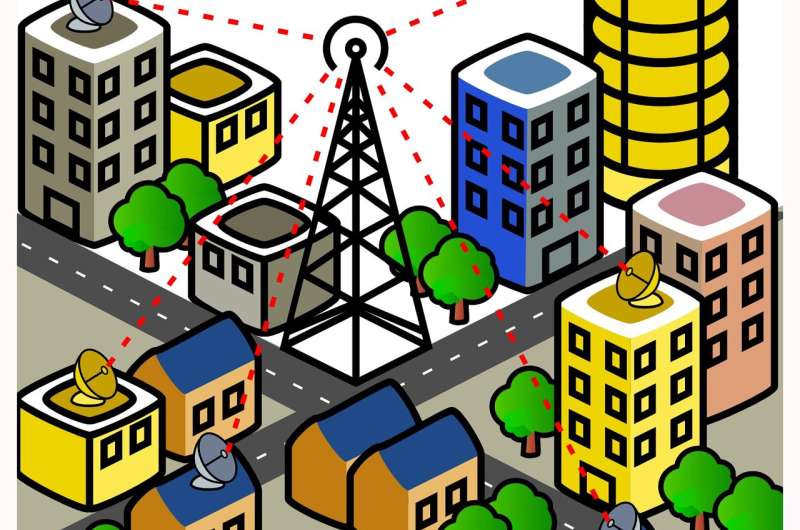Developing a liquid radio antenna

Solid, metal antennae have been the standard in a wide range of technologies for decades, including a wide variety of radio communications and scanning such as radar. However, research into the concept of liquid antennae was discussed in the 1990s. A liquid antenna would comprise a lightweight and perhaps collapsible container that could be erected into the appropriate shape and filled with a suitable liquid. Water, saltwater, ionic liquids, and other substances have been investigated over the years.
New work in the International Journal of Ultra Wideband Communications and Systems offers a novel design of a conical structure for a liquid antenna that can operate effectively across a wide frequency range. The antenna is compact and cost effective the team reports as well as offering a simple way to reconfigure it for different applications, something that is not easy with a solid metal antenna. Conical antennae are usually the form required for radio-frequency broadcast.
S. Roopa and E. Kiran Kumar of the Siddaganga Institute of Technology Tumakuru, in Karnataka, India, have demonstrated proof of principle for their new type of liquid antenna using pure water, seawater, and glycerin as the liquid component. The device can achieve voltage standing wave ratio of 1 to 2 over a frequency range of 300 to 850 megahertz, the team reports. They add that the gain achieved in experimental results was 2 dBi, which is comparable with their simulations in which the gain is around 1.9 dBi. The operating frequency is adjusted by changing the height of liquid within the cone.
The team concludes that their proposed antenna is simple, low cost, and covers a wide range of frequencies, which can be tuned easily. The radio emission from the antenna is omnidirectional and the fact that it is transparent gives it an additional attractive design feature for the development of wireless applications. In addition, the antenna is 30 to 40 percent shorter than its equivalent metal antenna.
More information: S. Roopa et al, Analysis of conical liquid antenna for wide range of frequencies, International Journal of Ultra Wideband Communications and Systems (2021). DOI: 10.1504/IJUWBCS.2021.119141





















